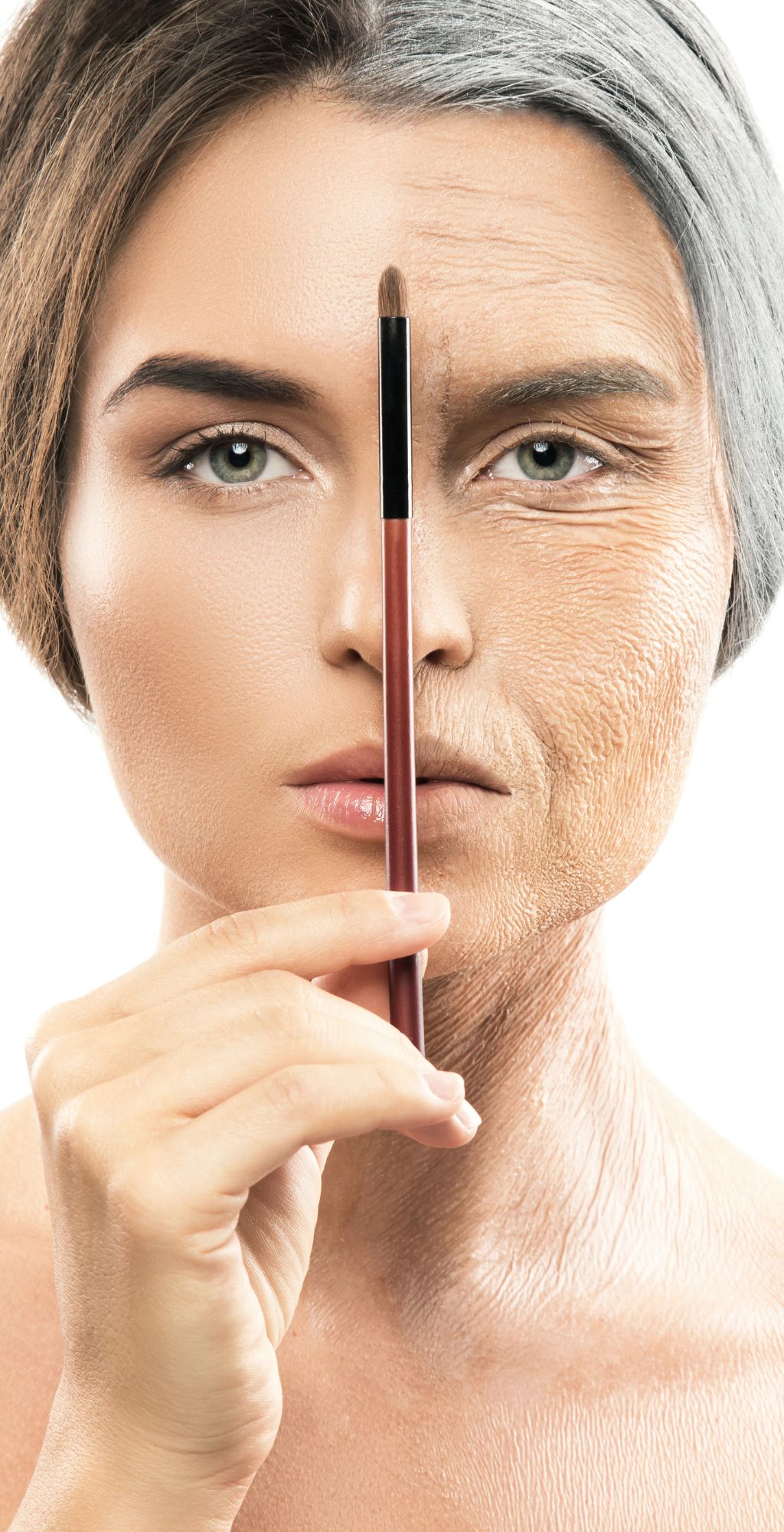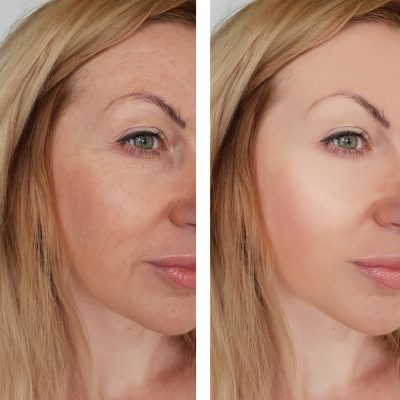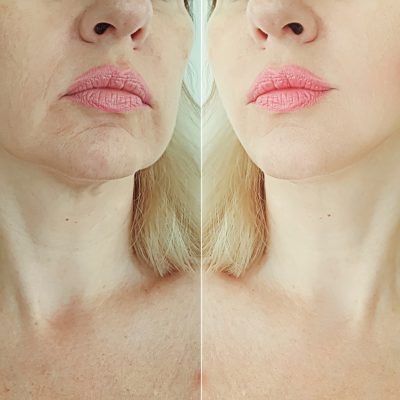Mini Facelift
- Home
- Mini Facelift
Mini Facelift:
When to consider a facelift?
A facelift is a surgical procedure that can address various signs of aging in the face and neck.
While each individual’s needs and goals may differ, there are some common factors to consider when thinking about a facelift:
Mild to Moderate Aging Signs
For individuals showing early signs of aging, particularly in the lower face and neck.
Desire for Subtle Changes
Suitable for those seeking a more subtle rejuvenation compared to a full facelift.
Faster Recovery Desired
Since it's less invasive, recovery is generally quicker.
Good Skin Elasticity
Ideal for individuals with relatively good skin elasticity.
Focus on Lower Face
Specifically targets sagging around the cheeks, jowls, and jawline.

Ultimately, the decision to undergo a facelift is a personal one. During your consultation with Dr. Brandt he assess your unique situation, discuss your options, and guide you towards the most suitable treatment plan to achieve your desired results.
What is a Mini facelift?
A mini facelift is a less invasive surgical procedure compared to a traditional facelift. It focuses on addressing signs of aging in the lower part of the face, particularly around the cheeks, jowls, and jawline. The procedure involves smaller incisions, usually along the hairline and around the ears. It aims to tighten the skin and improve facial contours, resulting in a more youthful appearance. Ideal for individuals with mild to moderate facial aging, a mini facelift offers a quicker recovery and less extensive surgery while still providing noticeable improvements in facial sagging and wrinkles.
Who is a good candidate for a Mini facelift?
To determine if you’re a good candidate for a mini facelift, try this simple self-assessment:
- Place your hands along the lower part of your jaw, with your index fingers pointing upward and thumbs under the jaw.
- Gently lift upward, applying vertical pressure.
- Observe the changes, particularly in the lower face and jawline.

If you feel like the lifted appearance turns back the clock and restores your appearance, then you may be a good candidate for a facelift. However, it is essential to note that this self-assessment is not a definitive diagnostic tool. To receive a professional evaluation and personalized recommendations, we encourage you to schedule a consultation with Dr. Brandt. He will thoroughly assess your unique facial features, discuss your concerns and goals, and provide expert guidance on whether a facelift or alternative treatments would be best for you.
What are other facelift options?
In addition to a deep-plane facelift, there are other facelift options available to address signs of aging in the face and neck. These alternatives include:
Standard Facelift/SMAS Lift:
A standard facelift, is an excellent surgical procedure that targets the mid-to-lower face and neck. It typically involves tightening some of the deeper tissue of the face but does not go so far as repositioning the deeper tissues. This is an excellent option for someone who does not need the repositioning provided by a deep-plane facelift.
Neck Lift:
A neck lift is specifically designed to address sagging and excess skin in the neck area and is almost always a part of a standard or deep-plane facelift. On its own, this procedure can be used to restore neck contours and is frequently combined with neck liposuction to sculpt and create more jawline and neck definition.
Ultherapy:
Ultherapy is an Ultrasound based minimally invasive procedure that tightens the deep layers of the face and neck called the SMAS and the platysma muscle. This procedure is ideally suited for early jowls and individuals who want to “stay ahead” of the aging process. There is minimal downtime and recovery after Ultherapy treatment.
Morpheus8 / Radiofrequency treatments:
Radiofrequency treatments use needle stamps or an insertable probe to head up the skin. During the treatment, a device delivers controlled heat energy to the deeper layers of the skin. This heat stimulates collagen production, which helps tighten the skin, reduce wrinkles, and improve skin texture. This procedure does not address the deeper tissues of the SMAS and platysma, and it achieves the best results in individuals with mildly loose skin.
Mini Facelift:
A mini facelift, also called a limited-incision facelift, this is a less invasive option that focuses on improving the lower face and neck. A mini facelift tends to lift and reposition tissue without the need for removing excess skin. As a result, this procedure involves shorter incisions and only addresses mild to moderate signs of aging, providing a more subtle rejuvenation.
Liquid facelift:
A liquid facelift is a non-surgical cosmetic procedure that uses injectable dermal fillers and neuromodulators to rejuvenate the face. Dermal fillers restore lost volume and enhance contours, while neuromodulators relax facial muscles to reduce wrinkles. The treatment is performed in-office without incisions or anesthesia. Benefits include restored volume, wrinkle reduction, and improved facial contours. Results are immediate but temporary, lasting several months to a year.
Thread Lift:
A thread lift is a non-surgical option that uses dissolvable sutures with tiny barbs to lift and reposition sagging skin. This procedure is minimally invasive and involves minimal downtime, consequently the results are minimal.
What does a Mini facelift address?
A mini facelift targets aging signs in the lower face and neck, focusing on reducing sagging skin around the jawline and cheeks, smoothing out mild to moderate wrinkles and folds in these areas, and enhancing the jaw and neckline contours. It is particularly beneficial for individuals experiencing early signs of aging and is a subtler, less invasive option compared to a full facelift.
What does a deep-plane facelift not address?
A mini facelift, while effective for certain aging signs, does have its limitations:
- Skin Quality: It primarily tightens and lifts but doesn't directly improve skin texture, discoloration, or sun damage. Treatments like laser resurfacing may be needed for these issues.
- Upper Face Aging: A mini facelift targets the lower face and neck, not addressing sagging eyelids or brows, which might require procedures like blepharoplasty.
- Fine Lines: This procedure is more effective for sagging and less so for fine lines or superficial wrinkles, where non-surgical options like injectables could be more beneficial.


What to expect during recovery from a deep-plane facelift?
During recovery from a mini facelift, you can expect:
- Shorter Downtime: Typically, recovery is quicker than with a traditional facelift.
- Mild Swelling and Bruising: These are common but usually less severe than in a full facelift.
- Some Discomfort: Manageable pain that can be controlled with prescribed medications.
- Reduced Activity: Limiting strenuous activities for a few weeks is advised.
- Visible Results Sooner: While some swelling may persist, the improvements are often noticeable shortly after the procedure.
- Follow-up Appointments: Essential for monitoring the healing process and addressing any concerns.
FACELIFT BEFORE & AFTER
Take a look at some of the results from our previous patients





What are the risks of a Mini facelift?
A Mini facelift, like any surgery, has risks and potential complications. It’s important to understand these risks before deciding to have the procedure.
Infection
As with any surgical procedure, there is a risk of infection.
Bleeding
Some bleeding is expected, but excessive bleeding might require medical intervention.
Scarring
Scars are typically minimal and well-hidden but are a natural outcome of surgery.
Nerve Damage
There's a small risk of temporary or, in rare cases, permanent nerve damage.
Asymmetry
Slight asymmetry in healing or results is possible.
Anesthesia Risks
Complications related to anesthesia, though rare, can occur.
Why choose Dr. Brandt for your Mini facelift?
Dr. Brandt is a Royal College certified Head & Neck Surgeon with advanced training and expertise in facial cosmetic surgery. He is a Diplomate of the American Board of Facial Plastic & Reconstructive Surgery and a Fellow of the Canadian, American, and European Academies of Facial Plastic & Reconstructive Surgery. Dr. Brandt trained at one of the most demanding Head & Neck Surgery programs in the Country – Western University in London, Ontario, Canada; and then went on to elite Fellowship training in Facial Plastic Surgery at the University of Michigan.
Dr. Brandt routinely spends time visiting and learning from the top international deep-plane facelift surgeons world-wide and is continuously refining his techniques to ensure you are receiving the best deep-plane facelift procedure.
In addition to his cosmetic work, Dr. Brandt is a sought-after expert in reconstructive facial plastic surgery where he uses his talents to restore patient’s faces after skin cancer removal surgery and improve facial scarring.
